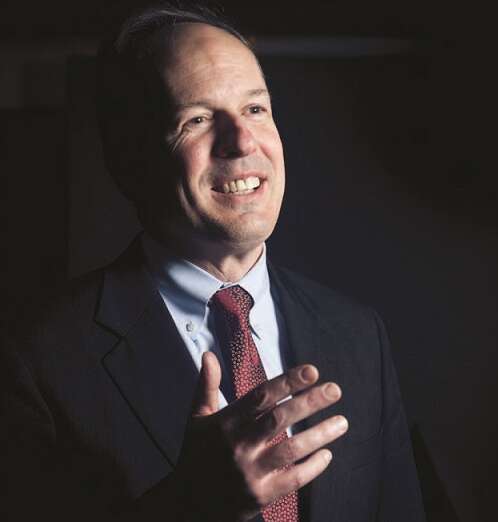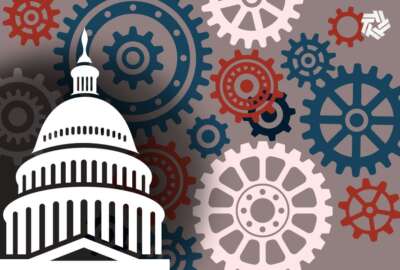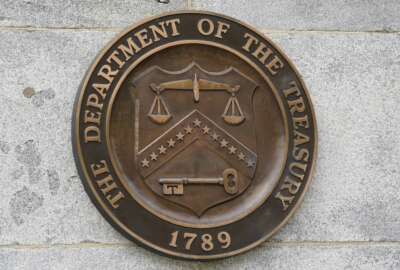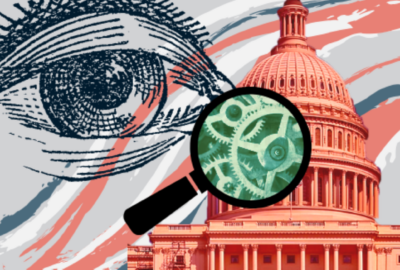Treasury giving agencies a fighting chance to prevent fraud
David Lebryk, the fiscal assistant secretary at the Treasury Department, said a new machine learning tool is reducing the chance of fraud from paper checks.
New data from the Government Accountability Office estimates agencies lost as much as $521 billion due to programmatic fraud between fiscal 2018 and 2022.
The Office of Management and Budget strongly disagrees with that estimate, questioning the plausibility of GAO’s assessment.
No matter what the real amount of fraud is across government — and agencies may never truly know — the Treasury Department is giving agencies tools to stop fraud before it starts.
David Lebryk, the fiscal assistant secretary at the Treasury Department, said Treasury is offering new and existing platforms and databases to help agencies move from being reactive to proactive in stopping fraudulent payments.

“Oftentimes was very difficult to have to raise our hand in real time and say, ‘we can get money out the door and prevent fraud at the same time.’ So one of the really major focuses that we’re having at Treasury is to think about ways that as you design programs and you have tools available to the agencies to make sure that you can do both — you can get the money out the door quickly but also make sure that you’re preventing fraud to the maximum extent possible,” Lebryk said in an exclusive interview with Federal News Network. “We have something called the Center of Payment Integrity, in which we have a number of databases that we allow agencies to match against. That includes looking at things like eligibility verification, making sure we’re not paying dead people, for example, understanding whether the vendor has problems and we shouldn’t be doing business with a vendor, whether there’s been someone incarcerated and other kinds of eligibility criteria. In addition, we’re also offering a service called Account Verification Services, in which we can make sure that when a payment goes to a bank account, it is in fact going to a real bank account holder. We can do that in real time. And third, we’ve had some success with really looking at check fraud and how we can minimize check fraud, which is a problem that’s impacting the private sector.”
While the Treasury makes 98% of all payments electronically, the 2% that goes out via paper check are facing a higher risk of fraud.
Treasury tool stopped $500M in potential fraud
Lebryk said Treasury has been piloting and is now expanding a new tool that uses machine learning to look for anomalies on paper checks. So far, Treasury has run about 40 million checks through the ML application.
“If we see an anomaly, we actually flag that check and let the financial institution know that there’s a potential problem with it,” he said. “To date, that tool has stopped over $500 million of fraudulent payments that would have gone out. It is a case of very good collaboration with the inspector general community. They allowing us to then use it to actually bring more cases against fraudsters. We have a lot more opportunity to do even more of that kind of thing.”
The verification tool scans checks looking for unusual such as a foreign bank account or address, or if the person has never received a government check before.
Like with any machine learning and similar tools, Lebryk said Treasury has been improving the data and models to gain confidence in the approach and reduce false positives.
Lebryk said Treasury is now using the check verification tool on all checks go through Treasury and the Federal Reserve.
“That information that is going back to financial institutions in really near-real time so that the financial institution can take quick action,” he said. “This is another case where the government has limited capability to design quickly, new technology and skills that the private sector is actually investing a lot of money in. So this is another example where we have leveraged the private sector, and we will continue to level of private sector in terms of looking at really their tools that are being used and that we might be able to take advantage of.”
GAO makes 3 recommendations
Treasury is looking for similar tools and capabilities from the private sector. It is holding an industry day on April 18-19, and released a request for information in early March to get a better understanding of what industry is using or is developing to improve payment integrity.
The use of better tools and data is one of three broad recommendations from GAO for how OMB and Treasury can do more to reduce and eliminate fraud.
GAO said OMB should issue new guidance that identifies and establishes consistent data elements and terminology for use across agencies and requires agencies to use existing data systems and processes to do more to limit fraud.
Meanwhile, GAO says Treasury should establish an effort to evaluate and identify methods to expand governmentwide fraud estimation to support fraud risk management. It should prioritize programs at increased risk of fraud. Treasury also should take more advantage of its data-analytics capabilities, such as within the Office of Payment Integrity, which includes the Do Not Pay program.
Lebryk said the Center for Payment Integrity proved its value time and again during the pandemic, and it’s expanding those lessons across the government.
“When we started using the account verification tool, we said if we were going to make an economic impact payment to an individual who already was receiving a government payment and we were comfortable that that was a legitimate account, we flipped some of those payments to go directly to those accounts,” he said. “That ability to do that significantly reduced fraud, but also importantly, it made for a much better end user experience.”
Treasury goal to risks core all payments
Lebryk said all of the tools through the Center for Payment Integrity are free to agencies.
“We want to encourage agencies to actually use these databases and to run their payments against those databases. Now, in the end, that agency has to make a determination about whether they want that payment to go through or not, with so many payments that we issue, we don’t have the ability to make judgments ourselves at Treasury. Only the agency can make a judgment about whether it’s a payment that they’d like to make or not make because they’re the ones who provide us the amount, and the person who’s actually going to receive the payment,” he said. “One of the challenges I think that we face is how do we make sure that agencies have the capability to use our services, and then once they get the information back from us, what do they do with that information? In some cases, there are situations where a hit will occur and, in fact, it should be a payment because it’s legitimate. There are other cases where it’s really shouldn’t be a flag. I think as we look into the future as we are trying to really develop these capabilities, we should be scoring every payment that the government makes. We should be putting some sort of confidence level of around that payment.”
Lebryk added in time the tools will continue to improve and give agencies a better sense of where a payment falls in the fraud/risk spectrum.
He said Treasury will continue to build or take advantage of private sector fraud detection capabilities and build internal analytical tools.
In fact, a new bipartisan bill, introduced Monday, backed by House and Senate lawmakers, as well as the White House and federal watchdog agencies still investigating pandemic fraud, would preserve analytics tools built by the Pandemic Response Accountability Committee (PRAC), a governmentwide council of inspectors general, and would repurpose those tools use to uncover more fraud in federal spending.
The Government Spending Oversight Committee Act would give agency IGs the tools they need to combat fraud across more than 10 major funding bills, including pandemic-related spending.
Lebryk said FEMA is a good example of an agency that is trying to take fraud prevention more seriously and building internal analytical capabilities to stop it proactively.
“It’s an area where there’s real opportunity because much of the money that’s spent is federally-funded, state-administered programs. I think one real area of opportunity for us is how do we engage the states more so they can actually have access to the data that we have available to us?” he said. “There’s things like has someone applied for an unemployment benefit in one state and also done it in two other states? And the ability to have datasets and capability to match against that to find out that’s occurring. It would and can be a really step forward into preventing fraud.”
Copyright © 2024 Federal News Network. All rights reserved. This website is not intended for users located within the European Economic Area.
Jason Miller is executive editor of Federal News Network and directs news coverage on the people, policy and programs of the federal government.
Follow @jmillerWFED







